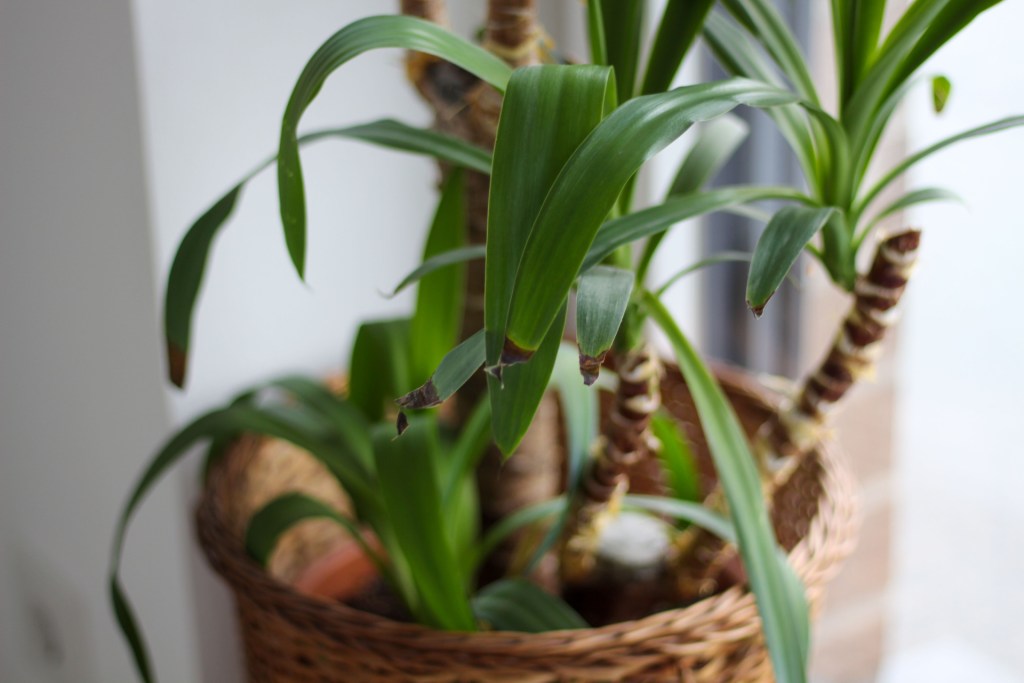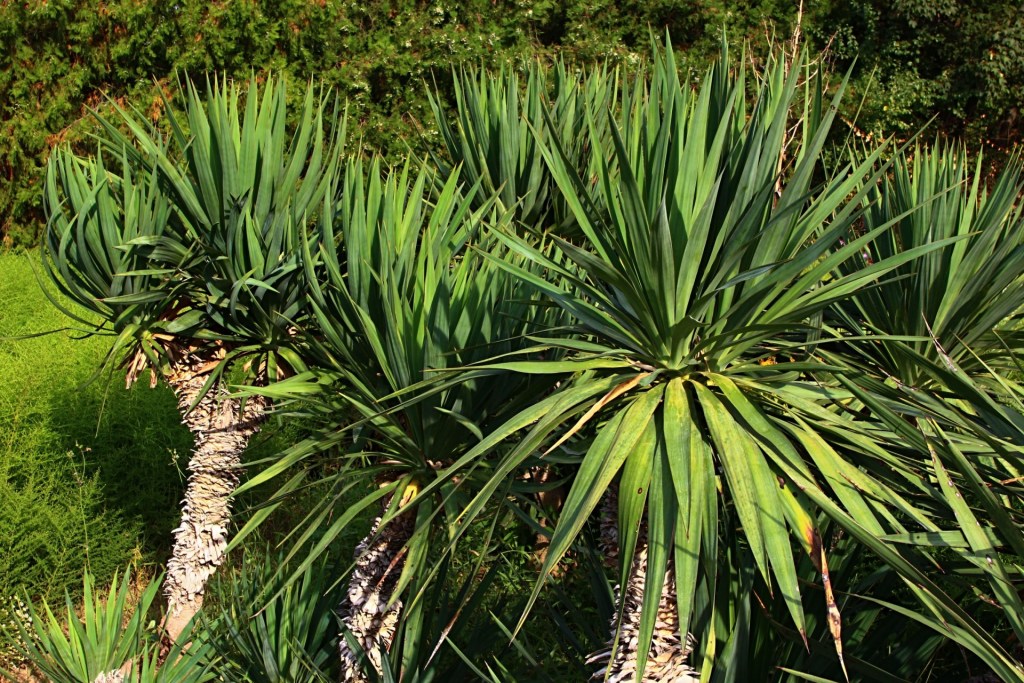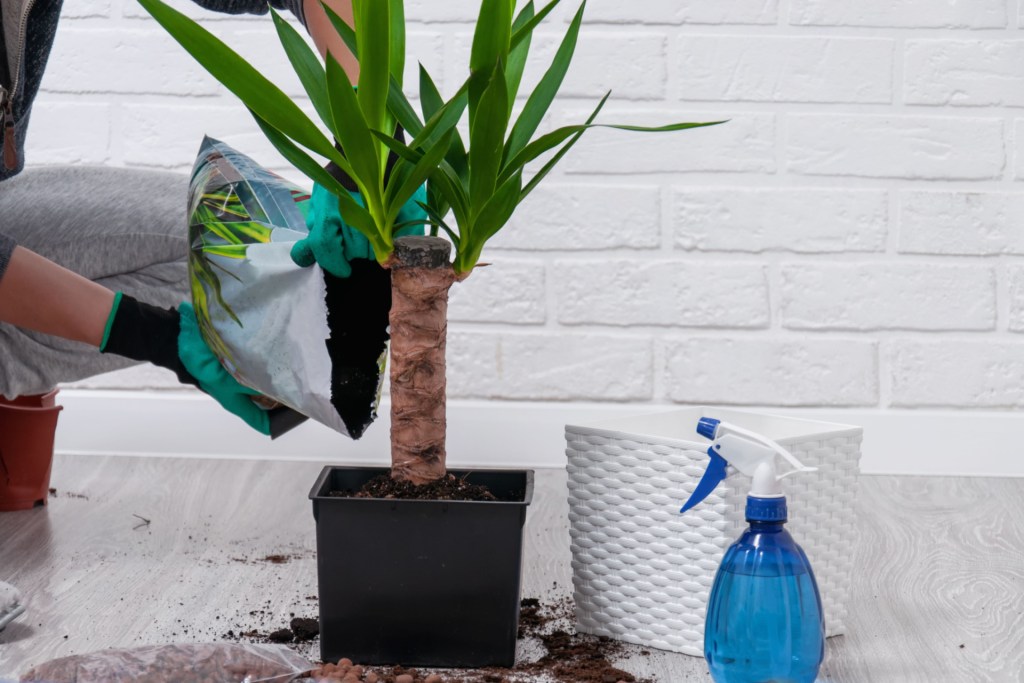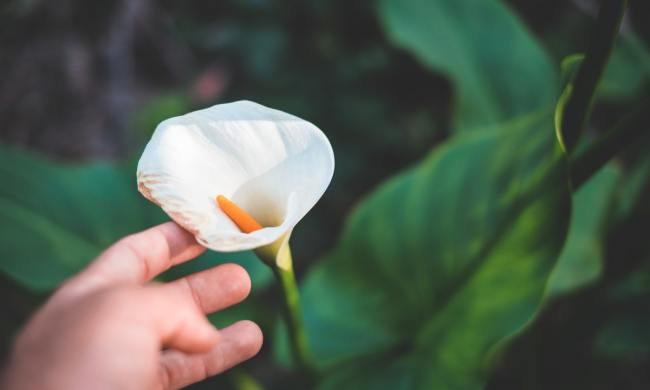Yucca trees might be known as striking and hardy landscaping plants, but they can also be lovely houseplants. If you're looking for a low-maintenance statement plant, you can use a tall yucca tree to add height and texture to your indoor jungle. Yucca trees are an excellent indoor plant, no matter your experience level. If you want to get started growing yucca trees, this is the guide for you.

What is a yucca tree?
The yucca plant can be found all over North America — this perennial shrub is specifically native to arid parts of the American Southwest, Mexico, and the Caribbean. When it comes to classification, yucca is a genus that is technically part of the agave subfamily of the asparagus family.
Yucca plants can take many forms, but the most common yucca houseplants (such as Yucca elephantipes) generally have sharp, sword-like leaves and woody trunks. The typical variety for home gardeners tends to stay around 2 to 4 feet tall, but some tree types can grow up to 30 feet tall. You may also find them as compact, stemless rosette plants, too.
Perennial in climate zones 5 to 11, yucca plants store water in their trunks or bulbous bases, so they fare well in sandy soil in drought-impacted areas. When planted outdoors, they can develop clusters of white blooms. Keep in mind that yucca leaves are sharp and that the plant is toxic to pets, so be careful about where you place yours.

Why should you get a yucca tree?
While sometimes overlooked, the yucca tree can be one of the easiest houseplants to maintain. Because of its succulent nature, it doesn't require a lot of watering or humidity. It's also a relatively accessible plant, easily found alongside dracaenas and pothos in grocery stores and nurseries.
On the matter of appearance, you get a leafy tropical vibe without needing to invest too much care into watering and humidity. If you want to move it outside, it'll do perfectly fine as an outdoor plant, too.

How to grow a yucca tree indoors
Both drought tolerant and cold hardy, yucca trees are relatively easy to grow, only requiring a minimal amount of attention on your part as a plant parent. With these steps in mind, you'll be on your way to growing a healthy, happy plant — just be aware that yucca trees are relatively slow growers as houseplants. Make sure to wear thick, durable gloves when handling a yucca plant, as the leaves are very sharp.
Step 1: Place your yucca cane in a suitable spot indoors, preferably a south- or west-facing window. Yucca trees need at least 3 hours of bright light a day for steady growth. Warm windows are OK, as these plants can tolerate warm temperatures between 65 to 85 degrees Fahrenheit.
Step 2: Plant your yucca cane in a regular potting mix with good drainage. You can add sand and perlite to your soil for extra drainage. As for the container itself, a porous terracotta planter with a drainage hole is ideal.
Step 3: Fertilize your yucca tree with a balanced, slow-release fertilizer in the spring and summer — you can also use a diluted liquid fertilizer diluted at half strength. Yucca trees aren't heavy feeders.
Step 4: Water your yucca cane whenever the top 1 or 2 inches of soil feels dry to the touch. Yucca canes are relatively drought-tolerant plants, so you only need to water them about every 10 days.

How to troubleshoot yucca tree issues
Yellowing or browning leaves are two of the biggest issues with yucca trees. You might encounter unhealthy foliage for a wide range of reasons, so it's helpful to consider the possibilities step by step — ultimately, yucca trees are hardy plants, so don't despair!
Step 1: Evaluate your plant for any signs of rot due to overwatering. The leaves may look yellow, the soil may have a pungent smell, and the plant trunk and roots may feel spongy. If your plant is still salvageable, repot it in fresh soil and cut back on watering.
Step 2: Check if your plant is in a comfortable temperature and humidity level — conditions under 45 degrees Fahrenheit and over 90 degrees Fahrenheit may cause yellowing leaves, browning tips, or falling foliage. Move your plant to an area without drafts or extreme temperatures.
Step 3: Look to see if your plant has spindly, brittle leaves. Thin leaves are likely due to lack of sunlight, so move your plant to a brighter window.
Step 4: Check your foliage for any burn spots, which may be due to too much light or overfertilizing. If you have your plant in a very bright spot, move it to a shadier area and acclimate it to light over time. If you suspect you've been overfertilizing, leach your soil out with water.
Step 5: Feel your leaves for any sticky residue and check for traces of pests that like sucking on the yucca tree's sap. Treat your plant with a horticultural oil as needed.

Will yucca trees bloom indoors?
Yucca trees have beautiful white flowers, but they rarely bloom indoors. Outdoor yucca plants will flower occasionally if they are growing in the right conditions. Yucca plants need to be in a hot, bright, dry climate in order to bloom, which is difficult to mimic in many parts of the U.S.
It's also quite difficult to perfectly mimic indoors. Unless you're willing to keep your home hot, low humidity, and bright, you're unlikely to see yucca flowers. Luckily, the plant's height and leaves are attractive on their own, so while you might miss the flowers you'll still have plenty to enjoy.
A desert beauty with tropical vibes, the yucca tree is a versatile, easy-care houseplant that can fit in seamlessly with many different types of plant collections. Whether you have it inside your home by a bright window or out in a cactus landscape, it'll make for an eye-catching fixture. As long as you give your yucca sufficient light and go easy on the watering, you'll be rewarded with a happy, steady plant for years to come.




